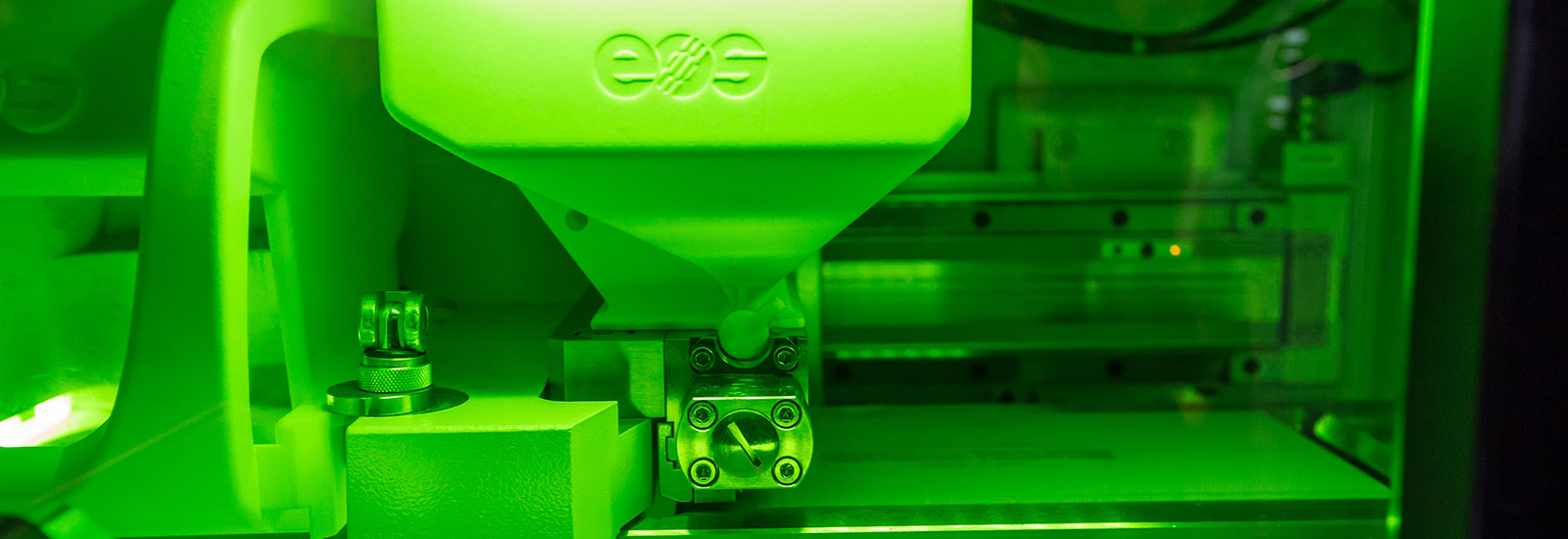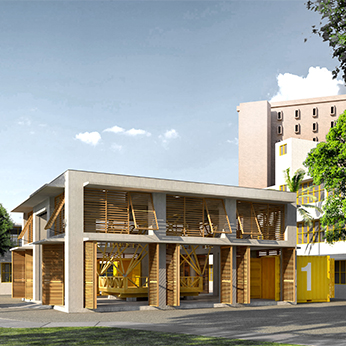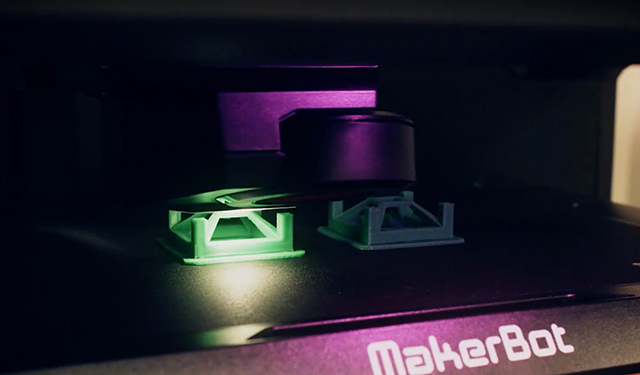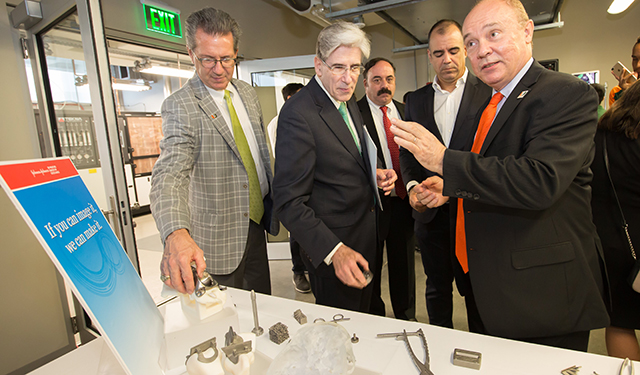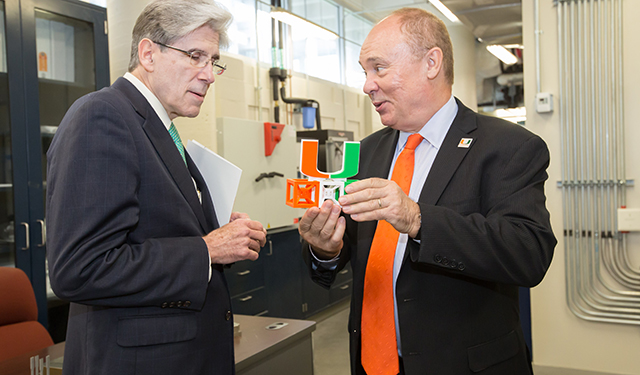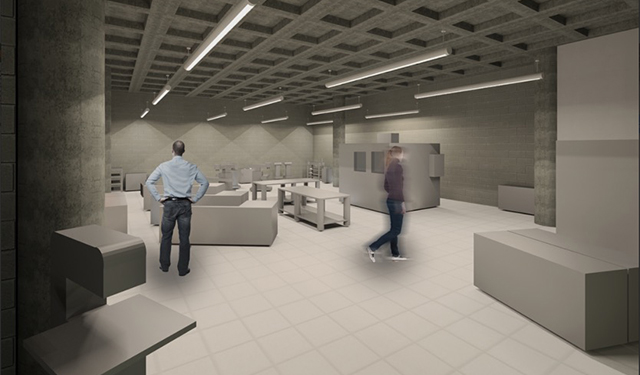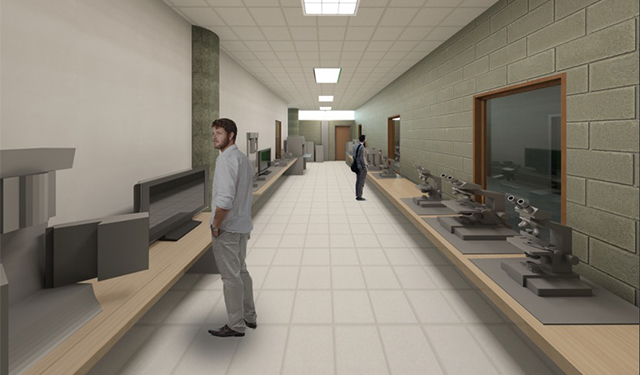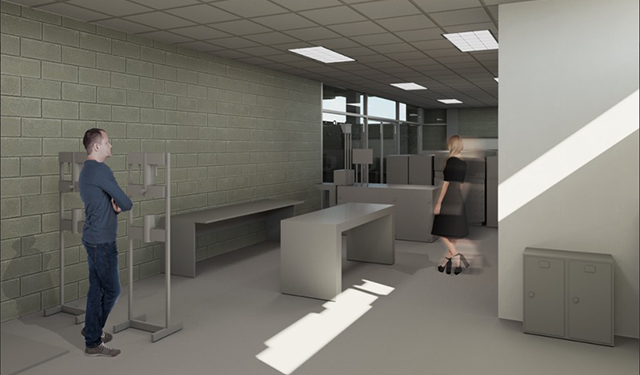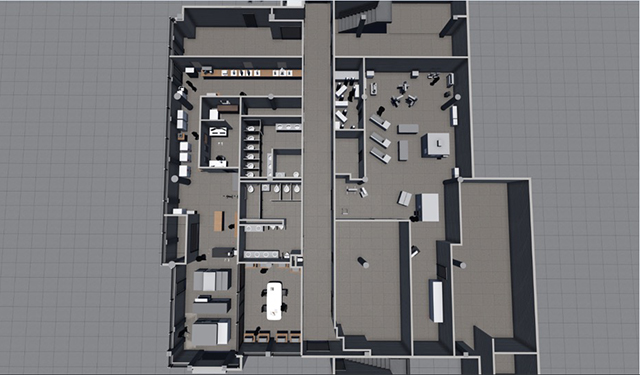UM faculty and students will have access to the lab’s state-of-the-art three-dimensional printing—or additive manufacturing—equipment, which is housed in a 5,850-square-foot “collaborative laboratory” inside the McArthur Engineering Building and includes ten 3D MakerBots that use polymers to create objects, and two 3D metal printers—one that uses titanium powder and the other, stainless steel. Students will work alongside J&J engineers and scientists, gaining invaluable experience.
Jean-Pierre Bardet, dean of UM’s College of Engineering, called the new facility a “collaboratory.”
“An engineering education has to give students the chance for hands-on creativity and allow their imaginations to soar,” he said at Monday’s ribbon-cutting. “Thanks to Johnson & Johnson, we have yet another resource to educate tomorrow’s technology leaders.”
UM President Julio Frenk welcomed the lab as “a hub for innovation” that will foster “constructive change.”
Indeed, 3D printing—the process of making three-dimensional objects by adding materials such as plastics or metals in successive layers—has been hailed as a game changer for everything from the medical to automotive and aerospace industries.
But 3D printing is not new. The technology has been around for more than 30 years, Joseph Sendra, worldwide vice president of manufacturing engineering and technology at Johnson & Johnson, noted during the dedication ceremony.
“What’s different today is the cyber-physical interconnectivity between man and machine. It’s the digital coming together with what’s real,” said Sendra, who graduated from UM’s College of Engineering with a degree in industrial engineering in 1993 and is one of three UM alumni who helped bring the new Collaborative Laboratory to UM.
“Additive manufacturing let’s you envision what’s possible,” he said, encouraging students to take advantage of the opportunity to collaborate and learn from J&J engineers.
Aerospace engineering major German Acosta Quiros, a junior, is already taking advantage of that opportunity. An intern in the Collaborative Laboratory since July, Quiros has been working with polymers and adhesives to optimize certain manufacturing processes within the biomedical field, specifically reducing the time it takes to manufacture catheters. And two weeks ago, the Hammond Scholar 3D printed a component for a hot-air blower system on which he’s been working. “It wouldn’t have been possible without the Collaborative Laboratory,” he said.
Ruiz, who is also an intern in the lab and graduates in May, said he plans to take what he’s learned from his stint in the lab “to help heal patients.”
At the event, guests were allowed to tour the new facility, which, in addition to its suite of 3D printers, includes a variety of other equipment—from a special furnace that strengthens certain materials by changing their microstructure, to instruments that measure the chemical composition of different powders, to microscopes used to examine the quality of different materials.
UM researchers are excited about the facility. Nurcin Celik, an associate professor of industrial engineering, says the new lab will help her complete a research project on the impact of single-stream recycling (SSR) on recycled paper products.
“Recycled paper faces a significant problem of contamination due to the rapid increase in single stream recycling in the U.S.,” said Celik, referring to the process in which all recyclables, including newspaper, cardboard, plastic, aluminum, and other materials, are placed in a single bin or cart for recycling. “There are different types of contaminants that need to be removed in recycled paper including broken glass pieces, metals, and plastics.”
Once potential contamination levels and their sources are identified, Celik will work with the U.S. Department of Energy’s REMADE (Reducing EMbodied-energy and Decreasing Emissions) Institute to establish a fiber separations testbed where different recycled materials will be tested for their manufacturing qualities. The 3D printing technology at the Collaborative Laboratory, she explained, will “save us significant amounts of time and effort in terms of our manufacturing tasks.”
Celik’s project, she said, will not only investigate new and promising ways to decrease contamination but could also lead to more efficient re-manufacturing techniques with recycled materials.
Ryan Lee Karkkainen, assistant professor in mechanical and aerospace engineering, hopes to use the lab to study the microstructure of certain materials with the hope of devising a process to make them stronger.
Ashutosh Agarwal, assistant professor of biomedical engineering, also has projects underway that stand to benefit from the Collaborative Laboratory. His organs-on-chips research can emulate a heart, pancreas, and other organs on a chip about the size of a USB stick, allowing his team to conduct risk-free biomedical testing.
“The new Collaborative Laboratory,” said Agarwal, “is a game changer for the college.”



